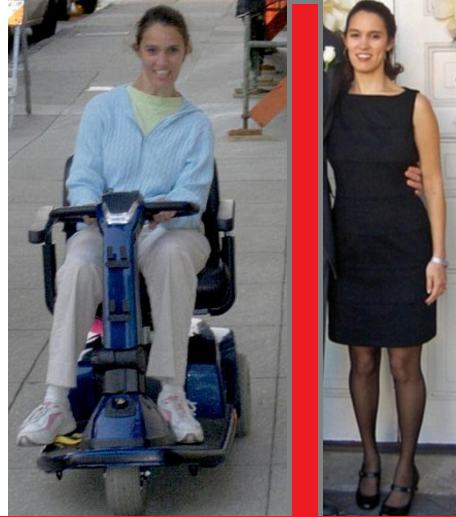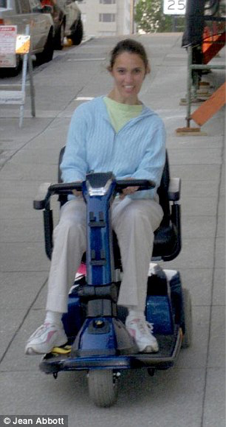
From the wheelchair to high heels: She was diagnosed with cerebral palsy and underwent surgeries but was actually ‘misdiagnosed’
This is the story of Jean Sharon Abbott from Plymouth, Minnesota. At the age of 4, Jean developed symptoms consistent with spastic diplegia and was hence diagnosed with the same.Her parents got a second opinion which confirmed the diagnosis. The next two decades of Jean’s life went along as well as it could for a child with disability. Jean accepted her disabilities and she tried to live her life as best as she could.
“I was never one to dwell on my disability or to think about it too much, other than when I was at these doctor appointments. I guess I was too busy trying to live a normal life and having fun with my friends and family.”
At the age of 12 she underwent a muscle transfer to prevent her knees from knocking.
In her late twenties she had a baclofen pump implanted in her body, but she developed toxicity. Little did she know that this was the turning point of her life. The specialist she visited for the treatment of toxicity questioned her diagnosis and sent her to a new neurologist.
Her new neurologist made a diagnosis of Dopa responsive dystonia.
DRD is an inherited dystonia typically presenting in the 1st decade of life. It is a rare disease affecting 1 to 2 in a million. Patients with DRD have selective striatonigral dopamine deficiency without neuronal loss, caused by genetic defects in dopamine synthesis. The disease starts off in one lower limb and the child tip toes. Diurnal variation in the symptoms are also observed. Patients initially present with gait disturbance. The disease the progresses for the next 15 years and plateaus in the third decade of life. Due to the rarity of the disease it frequently misdiagnosed, often as cerebral palsy. When diagnosed and treated levodopa and carbidopa the prognosis is good. No data are available on mortality associated with DRD, but patients surviving beyond the fifth decade with treatment have been reported.
The new diagnosis was literally life changing for Jean. Before she was nearly immobile and had to use a scooter to get around.
Just a few months after starting the new drug Jean started to catch up on all the thing she missed such as going on a hike and wearing heels.
The mother of three insists that she hold no resentment or anger towards the doctors who misdiagnosed her. She is currently raising awareness for DRD so that others like her might receive the proper treatment. (read more at her blog and also check out her video showing her both on and off L dopa).
Stories like Jean’s make one wonder if the rule “rare things are diagnosed rarely” should apply to specialists.


